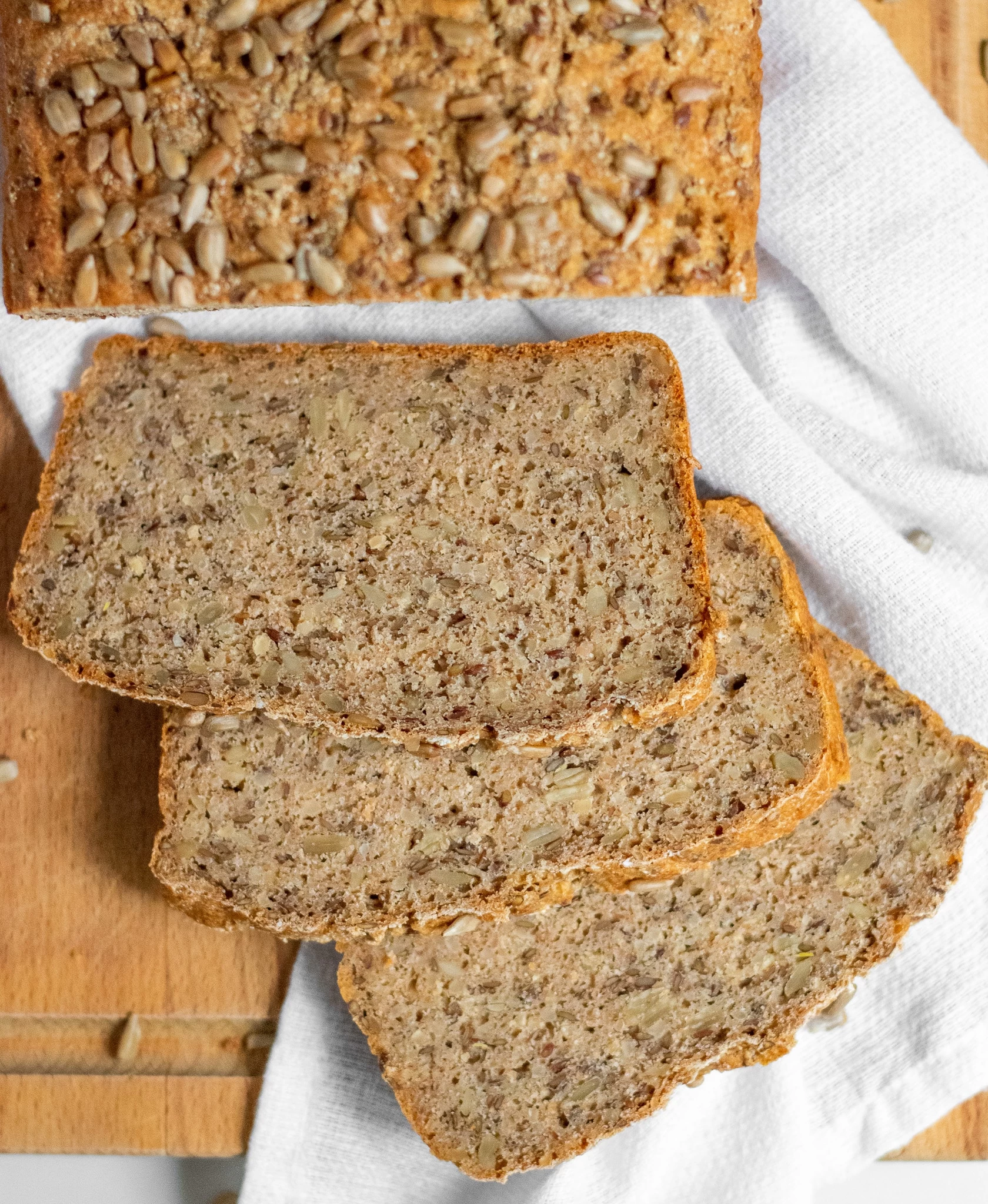Danish Rugbrød (Danish Rye Bread)

https://skandibaking.com/rugbrod-danish-rye-bread/
INGREDIENTS
- 2 ¼ tsp. active-dry yeast (2 tsp. instant yeast, 17 ½ grams fresh yeast)
- 200 ml (a little under 1 cup) warm water
- 70 grams (½ cup) sunflower seeds
- 80 grams (½ cup) flax seeds
- 100 grams (¾ cup) chopped rye OR cracked rye berries *(if using rye berries soak them for 8 hours/overnight before using!)
- 80 grams (½ cup) cracked wheat OR bulgur wheat
- ½ liter of Greek yoghurt
- 100 ml (½ cup) buttermilk
- 100 grams (¾ cup) whole wheat flour
- 300 grams (2 ½ cups) rye flour
- 75 grams (½ cup + 1 tbsp) all-purpose flour
- 2 tsp salt
- Extra sunflower seeds for the top
DIRECTIONS
-
Heat up your water until "fingervarm" (finger warm, meaning it should feel warm to the touch, but not hot) - or just use warm water from the tap - and add the yeast to it. Stir to dissolve, then let sit for 5-10 minutes until the mixture becomes bubbly and frothy. If the mixture doesn't froth, try adding a tiny bit of sugar to the water.
-
Combine all of the seeds in a large mixing bowl (if you have a stand mixer, you will need to use it, so use the bowl from the mixer).
-
Once the yeast mixture has bloomed, add it to the seeds. Then add your yoghurt and buttermilk and mix well.
-
Combine the three flours and salt in a separate bowl. Whisk to combine the ingredients.
-
Now you will need to use a stand mixer, fitted with a dough hook (you can also do this by hand using a wooden spoon, but it will be tough work!). Slowly add the flour mixture bit by bit while the mixer is running on low speed, letting it fully incorporate each time. You should end up with a very claggy and heavy dough (it will not be like any other bread dough you have worked with before - it is impossible to knead by hand!).
-
Once all the flour has been added, you want to let the stand mixer knead the dough for about 10 minutes. Again, you could try this using a wooden spoon, but it will take a lot of hard work! By the end, it should still be claggy and dense, but should not be quite as sticky as when you started kneading.
-
Let the dough rise, either for 8-12 hours overnight in the fridge, or for 1 hour at room temperature.
-
Line a loaf tin with parchment paper and oil any sides of the tin that are bare (you really don't want this bread to stick to the tin).
-
Once your dough has risen (although beware - you may not be able to visually see much of a difference with this dough), fill the tin with the dough and press it down so that you don't end up with gaps of air in the final product.
-
Use a fork to poke holes in the surface of the dough. Cover with plastic wrap or a damp dish towel and let the dough rise a second time, this time for around 45 minutes at room temperature. In the meantime, preheat your oven to 390 degrees F (200 C).
-
After the second rise, brush the top of your loaf with water and sprinkle with sunflower seeds, then place it on the bottom rack of the oven, and immediately turn the oven temperature down to 320 degrees F (160 C).
-
Bake for 1 hour and 10 minutes - it should be evenly browned across the top; if in doubt whether it's done, you can leave it in for 10 minutes longer! Keep in mind we bake using convection settings, so if you don't use convection, it may take a little bit longer. Remove from the tin after it has cooled off slightly, and let it rest on a cooling rack. We recommend waiting at least an hour before slicing, but it will be even easier to slice the next day. Enjoy!